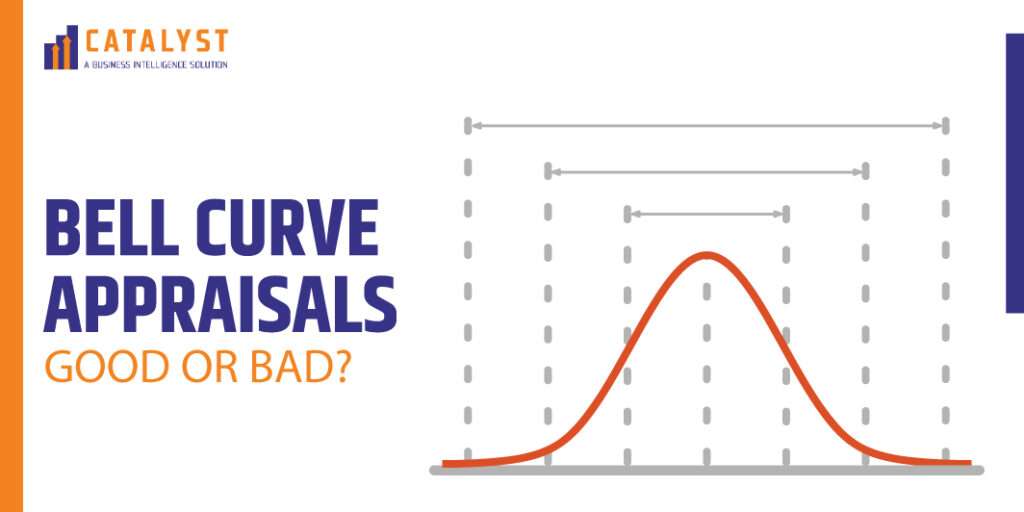
Bell Curve In Performance Appraisals– Good Or Bad?
Performance management is a crucial part of any organization’s success. However, employing the right performance appraisal system can be challenging. One common method is the bell curve distribution where employees are graded on a forced curve with a certain percentage of high, average and low performers. While the bell curve offers a simple way to differentiate performance, many argue it has significant limitations for modern organizations where Performance Management Software Systems can work better.
The bell curve method requires that employee ratings fit a predetermined distribution, which can leave deserving performers unfairly ranked. This forced ranking often ignores an employee’s actual abilities and performance in favour of fitting the grading curve. As a result, the bell curve can negatively impact employee motivation and teamwork within an organization. Morale tends to suffer for those considered “low performers” under the system.
WHAT IS THE BELL CURVE APPRAISAL METHOD?
Using the bell curve performance appraisal method, employee performance reviews are plotted on a bell curve distribution where a certain percentage of employees fall into high, average, and low performer categories. For example, the top 20% are high performers, the middle 70% are average, and the bottom 10% are low performers. When used in a performance management system, it can lead to unfair rankings as employees may not naturally fit into the forced distribution, whereas a professional Business Performance Management Solution with preset KPIs for every employee eliminate such limitations.
HOW DO ORGANIZATIONS CREATE A BELL CURVE FOR PERFORMANCE APPRAISAL?
To create a bell curve for performance management, HR collects employee performance ratings or appraisal scores and plots them on a graph. The horizontal axis represents performance ratings, while the vertical axis shows the number of employees. A typical bell curve would show a high number of average performers, tapering down to fewer top and low performers.
The bell curve is used because it is believed that employee abilities naturally follow a normal distribution. However, critics argue this is not always true. The forced distribution required by the bell curve method leads managers to rank some employees artificially lower to fit the curve. Managers may rank employees based on competition rather than actual performance.
LIMITATIONS OF THE BELL CURVE IN PERFORMANCE APPRAISAL
Some limitations of the bell curve approach include:
• Employee abilities may not naturally fit into a bell curve system of distribution.
• Forced rankings can leave deserving employees unfairly rated lower.
• Use of a bell curve encourages competition rather than cooperation among employees.
• Morale can suffer among those rated as low performers.
• Managers may fit employees to the curve inappropriately.
ADVANTAGES OF BELL CURVE IN PERFORMANCE APPRAISAL
• Provides easy performance differentiation in grading employees.
• Appropriate for environments that demand a small number of top performers.
• Straightforward method of performance management.
DISADVANTAGES CONS OF BELL CURVE IN PERFORMANCE APPRAISAL
• Requires forced ranking of employees that may be unfair.
• Ignores actual performance in favour of fit to the distribution.
• Encourages internal competition rather than teamwork.
• Negatively impacts morale for those rated low performers.
•, Unlike comprehensive Business Performance Management Software, a Bell Curve method may fail to identify actual high and low performers.
IS THE PERFORMANCE MANAGEMENT BELL CURVE STILL RELEVANT IN TODAY’S HYPERGROWTH ENVIRONMENT?
Though the bell curve was once popular, many argue it is less relevant today. Factors like:
• Teamwork and collaboration are prioritized over individual performance.
• Employee motivation comes more from meaningful work than competitive grading.
• Companies seek to develop and improve all employees, not just a select few.
• HR interventions can help all employees improve performance, not just “average” or “low” performers.
THE BOTTOM LINE
While the bell curve provides an easy way to grade and differentiate employees, it relies on forcing rankings that can be unfair and demotivating. Many companies criticize it but they still use it because of the limitations of viable alternatives for performance appraisal systems in the market.
Instead of the bell curve, successful organizations today should focus on developing processes that evaluate each employee’s actual performance and potential. There is a push for meaningful work that motivates employees rather than competitive grading. Organizations seek to improve the performance of all workers, not just a select few. With adequate analysis via Business Performance Management Software like CATALYST by Phi EGDE and appropriate HR department interventions, companies can help all employees increase their contribution to organizational goals. Such holistic development tends to yield higher performance outcomes than the traditional bell curve model.
Interested to explore CATALYST, the cloud-based Business Performance Management Software System? Click Here to BOOK A DEMO. Our team will get in touch with you soon. Let’s revolutionize the way your organization does performance management.


